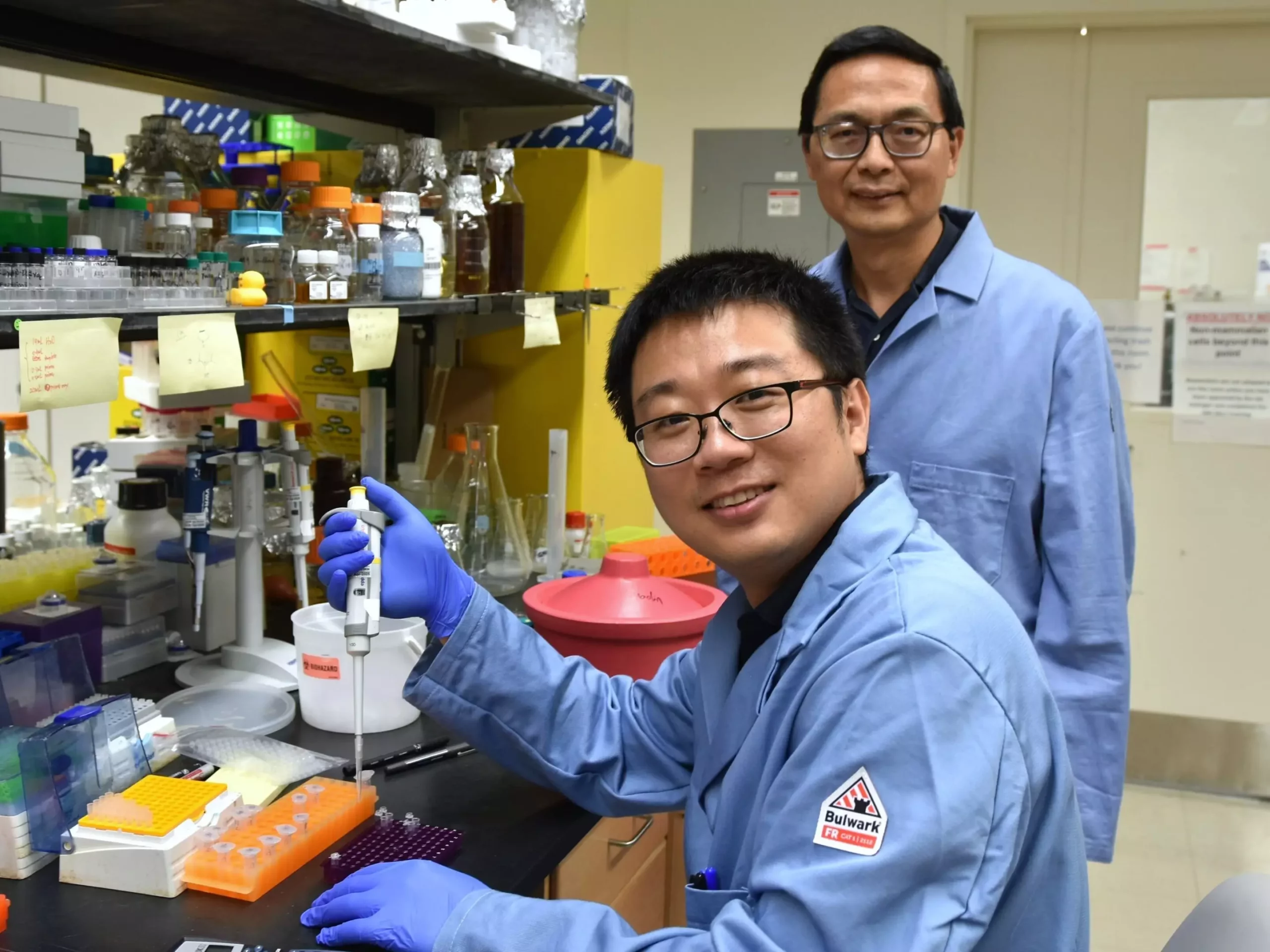A groundbreaking study conducted by researchers at the Center for Advanced Bioenergy and Bioproducts Innovation (CABBI) has unveiled a significant breakthrough in the field of green chemistry. By combining natural enzymes and light, the team from the University of Illinois Urbana-Champaign has developed a revolutionary eco-friendly method to precisely mix fluorine, a crucial additive, into chemicals known as olefins. These hydrocarbons are commonly used in a wide range of products, including detergents, fuels, and medicines. This innovative approach offers a more efficient strategy for producing high-value chemicals, with potential applications in agrochemicals, pharmaceuticals, renewable fuels, and beyond.
Fluorine, as an additive, plays a vital role in enhancing the effectiveness and longevity of agrochemicals and medicines. Its unique properties, such as small size, electronic characteristics, and solubility in fats and oils, greatly influence the functionality of organic molecules. By improving absorption, metabolic stability, and protein interactions, fluorine can significantly impact the performance of these compounds. However, incorporating fluorine into chemicals has traditionally been a challenging and environmentally unfriendly process, requiring complex chemical reactions.
In this study, scientists utilized a “photoenzyme,” a light-activated enzyme, to facilitate the introduction of fluorine into olefins. By leveraging the power of light and photoenzymes, researchers were able to precisely attach fluorine to specific locations on the molecules, thereby gaining unprecedented control over the synthesis process. This innovative approach not only reduces the environmental impact of chemical production but also enables the creation of previously unattainable compounds in a more efficient manner. By filling the existing gap in molecular chemistry, this method offers new avenues for developing improved medicines and agricultural products, leveraging the unique benefits of fluorinated compounds.
The successful synthesis of fluorinated compounds through this novel approach has far-reaching implications for various industries, including agriculture and medicine. With the ability to produce more effective and long-lasting fertilizers, herbicides, and medicines, this breakthrough could revolutionize crop protection and healthcare. By enhancing the potency and stability of these products, fluorination offers the potential to improve outcomes while minimizing side effects. The applications of this technology extend beyond current capabilities, opening up possibilities for the development of greener and more sustainable solutions for everyday use.
Aligning with Environmental Sustainability
Dr. Huimin Zhao, the lead researcher on this study, emphasizes the importance of sustainability in chemical synthesis. By harnessing the power of light-activated enzymes, the team has developed a method that not only enhances the efficiency of syntheses but also aligns with environmental sustainability. This innovative approach represents a paradigm shift in the production of fluorinated compounds, offering greener alternatives to traditional chemical synthesis methods. The potential for developing new, sustainable technologies in chemical production could have far-reaching impacts on society at large, promoting a more environmentally conscious approach to manufacturing.
In addition to its implications for chemical synthesis, this research significantly contributes to CABBI’s mission of advancing bioenergy innovation. By pioneering new methods in biocatalysis, this study opens up opportunities for enhancing the production of bio-based chemicals derived from renewable sources. This aligns with CABBI’s focus on creating sustainable bioenergy solutions that reduce environmental impact and decrease reliance on fossil fuels. The development of more efficient and environmentally friendly biochemical processes supports the broader mission of the U.S. Department of Energy (DOE) in driving advancements in bioenergy and bioproducts, leading to cleaner and more sustainable energy technologies.
The groundbreaking research conducted by the team at CABBI represents a significant milestone in the field of green chemistry. By harnessing the power of light-activated enzymes to facilitate the synthesis of fluorinated compounds, researchers have unlocked new possibilities for creating more effective, sustainable products with applications in agriculture, medicine, and beyond. This innovative approach not only improves the efficiency of chemical synthesis but also aligns with environmental sustainability, paving the way for greener technologies in chemical production. With the potential to revolutionize various industries and support economic growth, this research sets the stage for a brighter, more sustainable future powered by green chemistry.


Leave a Reply